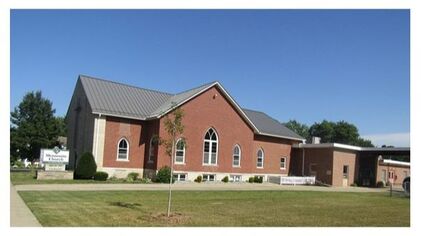Have a Blessed Week
What's Happening @ FMCJuly 17
6:30 Administration Commission July 21
Pastor Tim's Message "Getting Our Priorities Straight" Haggai 2:1-9 July 21
Last Day to Sign up For FMC trip to the South Bend Cubs game August 8 Quick Links:
Search our site:
Come and join us!
Sunday Worship: 9:00 AM (Sunday School following) You are welcome to join us on Sunday, or stop in for a chat! We want to meet you! |
Sermons on YouTubeFollow link above to our church page on YouTube
On the Journey...
The Lesson of the Wildflowers Written by Pastor Phil Yoder God put so many signs in creation to remind us of His goodness, greatness, and faithfulness. The hand print of God is evident everywhere in creation, if we have eyes to recognize it. And we see it in the simple as well as in the complex.
One of the places I have recently noticed the hand print of God is in the spring flowers. The brilliant colors, the details, how delicate and fragile they are, and even though their lives are incredibly short, they have their moments to shine every year. At our house, we have a few Siberian Irises. They are extremely delicate and beautiful, a deep purple color. Their tiny pedals look and feel like velvet, as if to display the intricate work of a master artist. But they bloom only once a year, and then for only a week at best, and some for only a few days. These incredibly beautiful flowers lie dormant all winter, frozen under the snows of winter. But at their appointed time, they come bursting out of the ground, and it is not long until they display the magnificent artistry of God. Recently, on a trip to the mountains, I observed wildflowers emerging from a long winter, buried all winter under many feet of snow. And the thing that amazed me, is that as the summer sun warmed the earth, and the snow line receded, wildflowers came bursting out from what not long ago was frozen tundra. And just 20 to 30 inches from the receding snow line, there were wildflowers already in bloom in magnificent and brilliant colors, displaying a latent beauty that was unseen in the death of winter’s cold and harsh reign when nothing seemed to live. These tiny wildflowers lay dead at the mercy of nature, but in their time, they came bursting out of death to display a triumphal beauty that the brutalities of winter could not destroy. And in the few days of their short lives, they fill their space in the world with magnificent beauty. And we have seen this in the desert too. Suffering draught and lack of life supporting water, wildflowers lie dormant under the scorching sun, often for years. It appears as though the desert is dead; nothing can live there. But in the rare years when rains come, wildflowers come bursting to life, and the desert blooms with unparalleled beauty. There is so much hope in the lesson of wildflowers. At the appointed time, that which is dead is given new life. God placed signs of resurrection and new live in nature, even in the wildflowers. Godly people from past generations have died and have been placed in the ground, and many have since been forgotten. Their bodies decayed, their memories forgotten, as the world goes on without them. It appears in the world as though their lives have been for naught. But at God’s appointed time, they too will come bursting out of the ground with new life, to display a glory and beauty that reflects the handiwork of their creator. |

